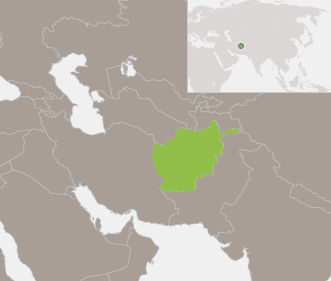This month the U.S. Department of Defense (DoD) released its latest semi-annual report to Congress on the progress toward security and stability in Afghanistan. This report provides a detailed snapshot of indictors on the overall security, governance, reconstruction, and Afghan National Security Force (ANSF) development efforts by NATO-ISAF and the international community to date. The assessment of ANSF development and transition toward taking the lead in security operations is receiving increased attention, as the end of the NATO-ISAF mission is quickly approaching in 2014 and there are concerns about ANSF’s ability to hold the fragile country together in the absence of a large international presence.
One specific indicator – that only one Afghan National Army (ANA) brigade out of 23 is rated as fully “independent with advisors”[1] – has been cited by news media as a “bleak” prospect for the long-term future of the ANSF. This is somewhat misleading in that the rating is of the brigade headquarters element, not its subordinate units – battalions (kandaks) and companies (coys) – which perform the bulk of tactical security operations. By contrast, of the 121 kandaks assessed, 20 (16 percent) received the highest “independent” rating and 72 (60 percent) received the second highest rating of “effective with advisors” (p. 93). Brigade headquarters, rather, are the lowest command echelon that plan and integrate combat support units into operations, which perform vital functions such as artillery and close air support, medical evacuation, and logistics and maintenance support. The ability to plan, synchronize, execute, and sustain brigade, division and corps level operations is of a higher order and complexity than that of battalion operations and below, requiring a greater degree of institutional sophistication, leadership, and staffing capacity.
Related, and of equal concern, however, are the institutional development ratings of the Afghan Ministries of Defense and Interior. The report cites that the NATO Training Mission (NTM-A) is now behind schedule on ministerial development and transitioning ANA and ANP training facilities to Afghan control mainly due to recent changes in Ministry of Defence and Ministry of Interior Affairs leadership prompted by the Afghan parliamentary vote of no confidence earlier this August. Clearly political accountability of the security sector is a positive development and the resulting short-term turnover and relational setbacks are a consequence that NTM-A must overcome.
Yet, there are two significant reasons for this lag in ministerial development, other than it simply being a more difficult task to accomplish than generating more Afghan soldiers and police. First, ministerial development has been largely viewed as important to Afghan security sector reconstruction, but still remains secondary to rapid generation and fielding of the Afghan army and police forces. This prioritization is evident in the recent DoD report:
As Afghanistan continues to become more secure and stable through 2015-2016, the Afghan government, in coordination with NATO and other partners, will begin to refocus the ANSF toward enduring security roles, and consider how to reshape the ANSF into a more sustainable force (p. 94).
Second, and perhaps most importantly, advising the Afghan Minister of Defense or Interior is ‘a quantum leap’ from advising an Afghan National Army kandak or district police commander. It is tremendously difficult to fill ministerial advisor positions in the NTM-A with the best possible individuals who are the right age and have the right experience level, the appropriate senior defense or law enforcement management expertise, cultural knowledge, language and negotiation skills, and above all, the personality necessary to build trust and influence their counterparts. Over time, these positions are increasingly vital to advancing long-term security sector reform and sustainability of the ANSF.
As the Obama administration and committed NATO partners continue to deliberate over the long-term security assistance model and troop commitments to Afghanistan, they should all recognize the relative importance of ministerial development vis-à-vis security force development and broader counterterrorism goals. Accordingly, they must strike an appropriate balance of long-term resource commitments that prevent an all-out collapse of the Afghan state, but also accelerate ministerial development toward independence from external assistance.
Nick Armstrong is an Associate at the Security Governance Group.
[1]
According to the report, “Independent with Advisors” is the highest possible rating an Afghan unit can receive and is defined as: “The unit is able to plan and execute its missions and maintain command and control of subordinate elements, calling on and controlling a QRF [quick reaction force] and medevac assets when required. When necessary the unit can call for and integrate joint effects from coalition forces and is capable of exploiting intelligence and operating within wider intelligence systems…” (p. 165).






 Visit the Centre for
Visit the Centre for